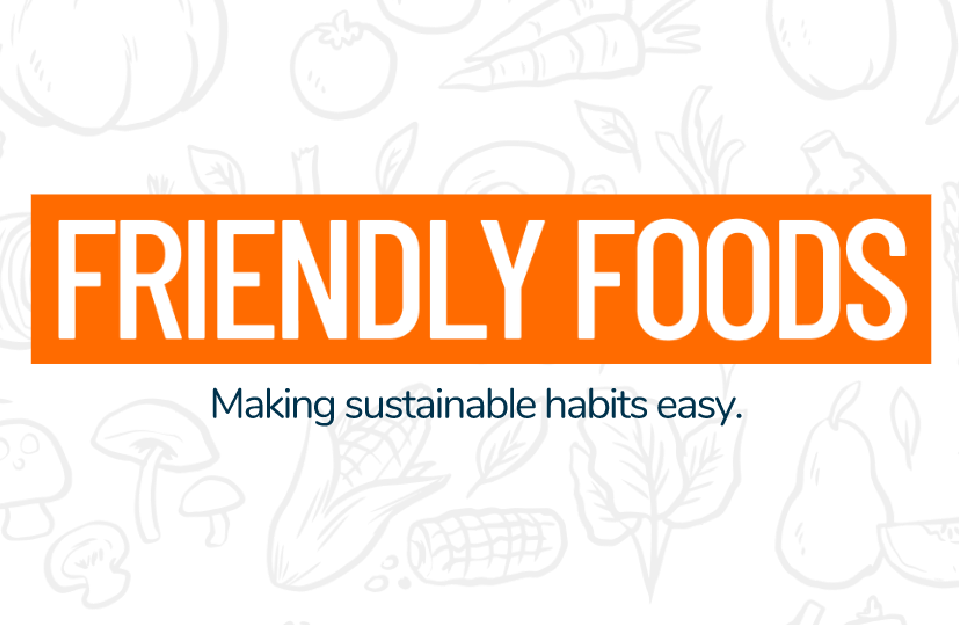Corporate Innovation: Europcar Case
Background:
Final academic challenge during the course of Corporate Innovation and Culture Change in the Master’s of Customer Experience and Innovation at IE Business School.
Process
1. Challenge:
Develop the innovation strategy composed of the cultural transformation and an innovation portfolio for Europcar.

2. The Innovation Department:
In order to meet our objectives, we defined our ways of working and methodology based on success cases, such as McKinsey’s suggestion for high-performing innovation team’s.
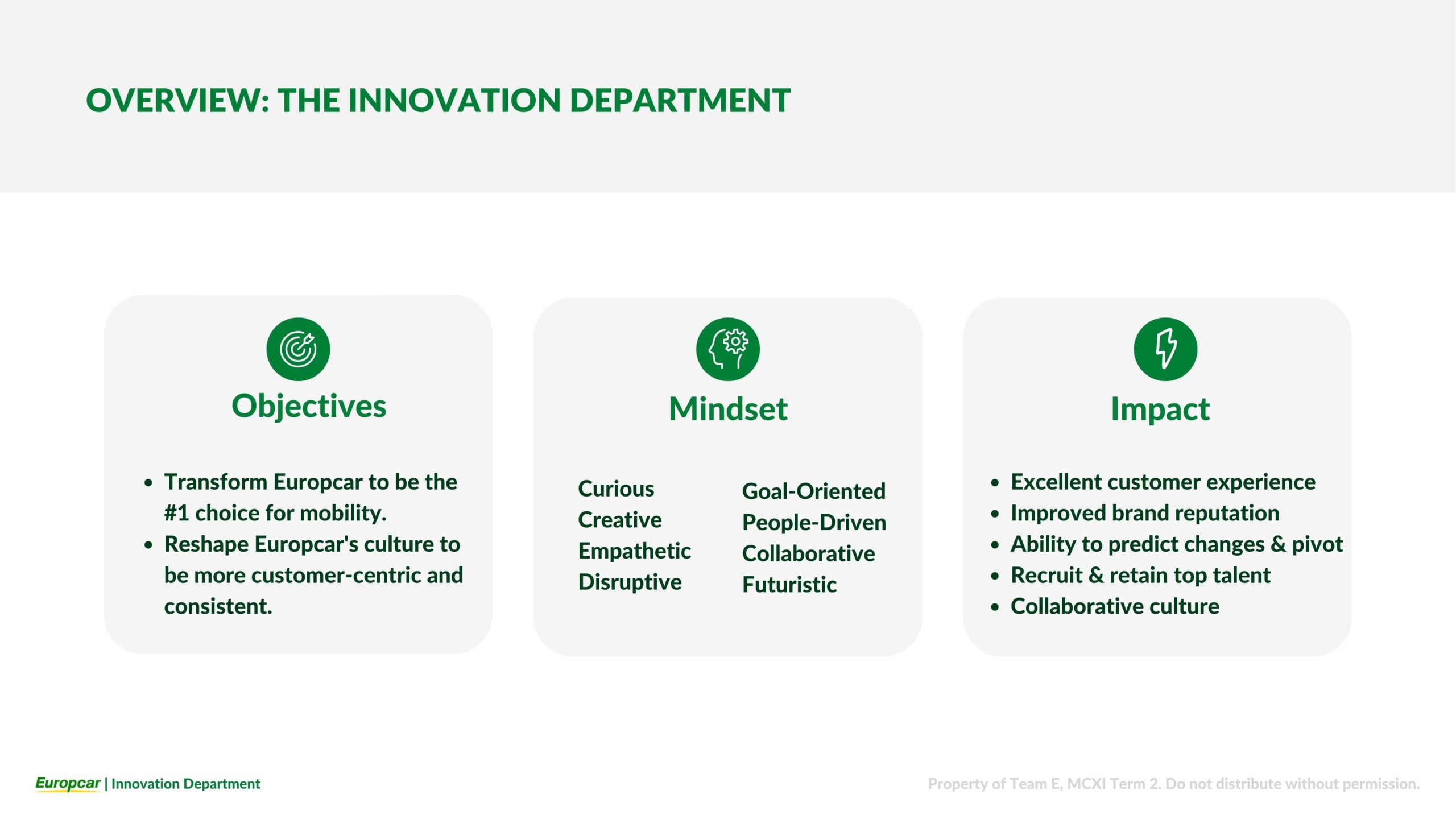
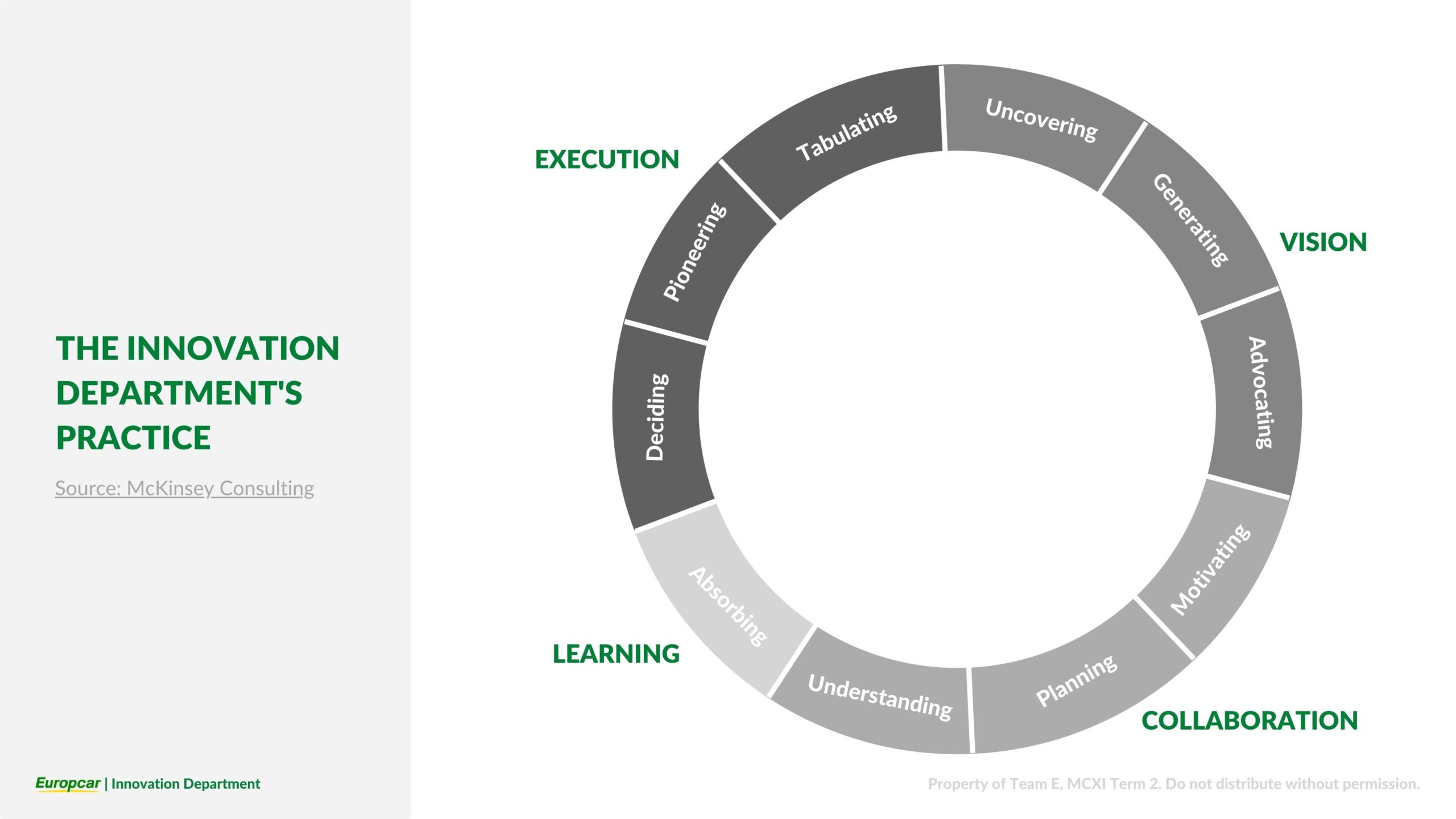
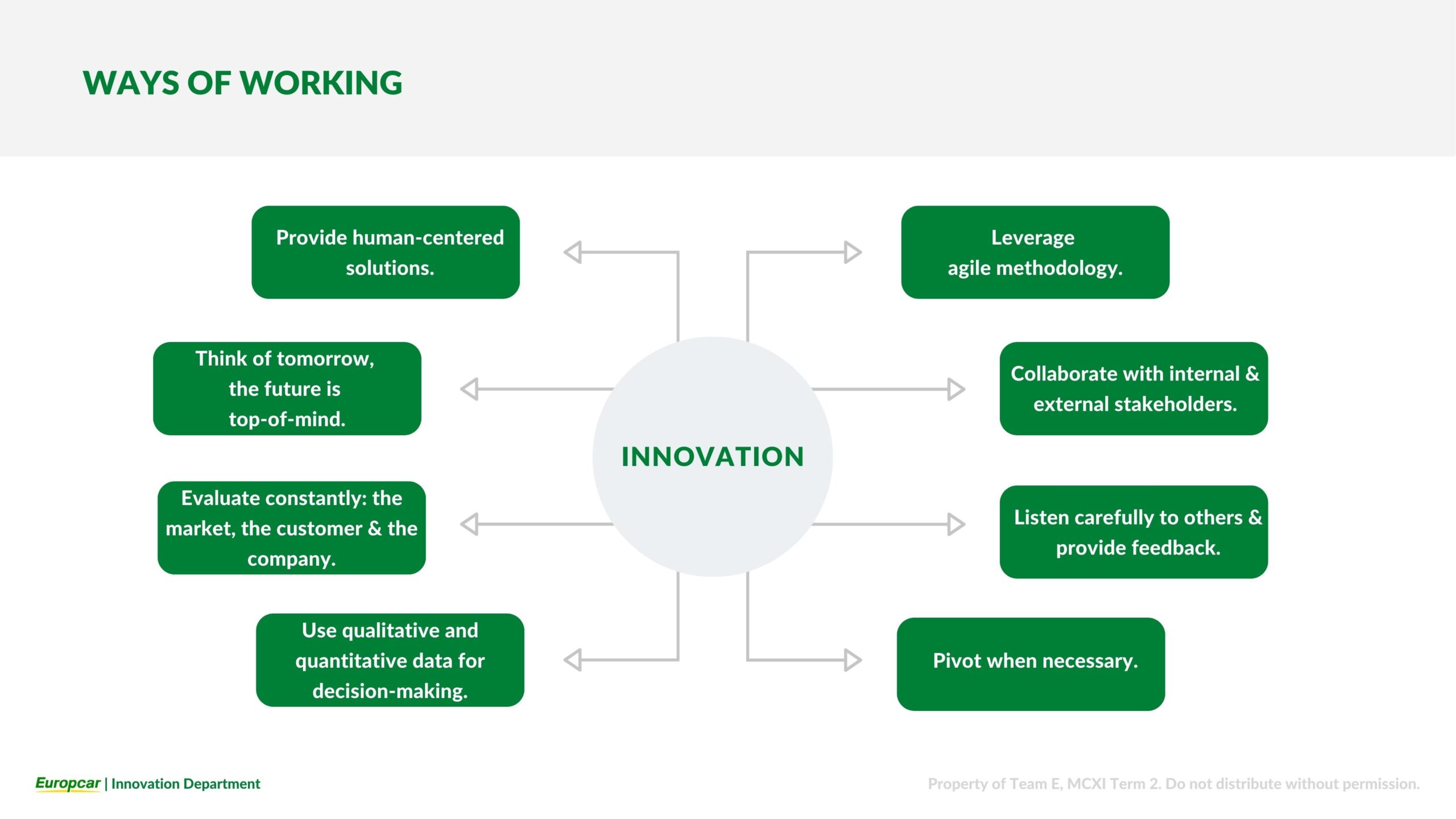
“Let's drive on the road to success together.”
3. Cultural Transformation
Understanding the Current Culture:
1. Deep-dive into the company’s culture by conducting internal and external research, such as: Employee Interviews, Indeed, LinkedIn, Europcar’s Website, and Glassdoor.
2. Reviewing the company’s statements, including investor relations press releases.
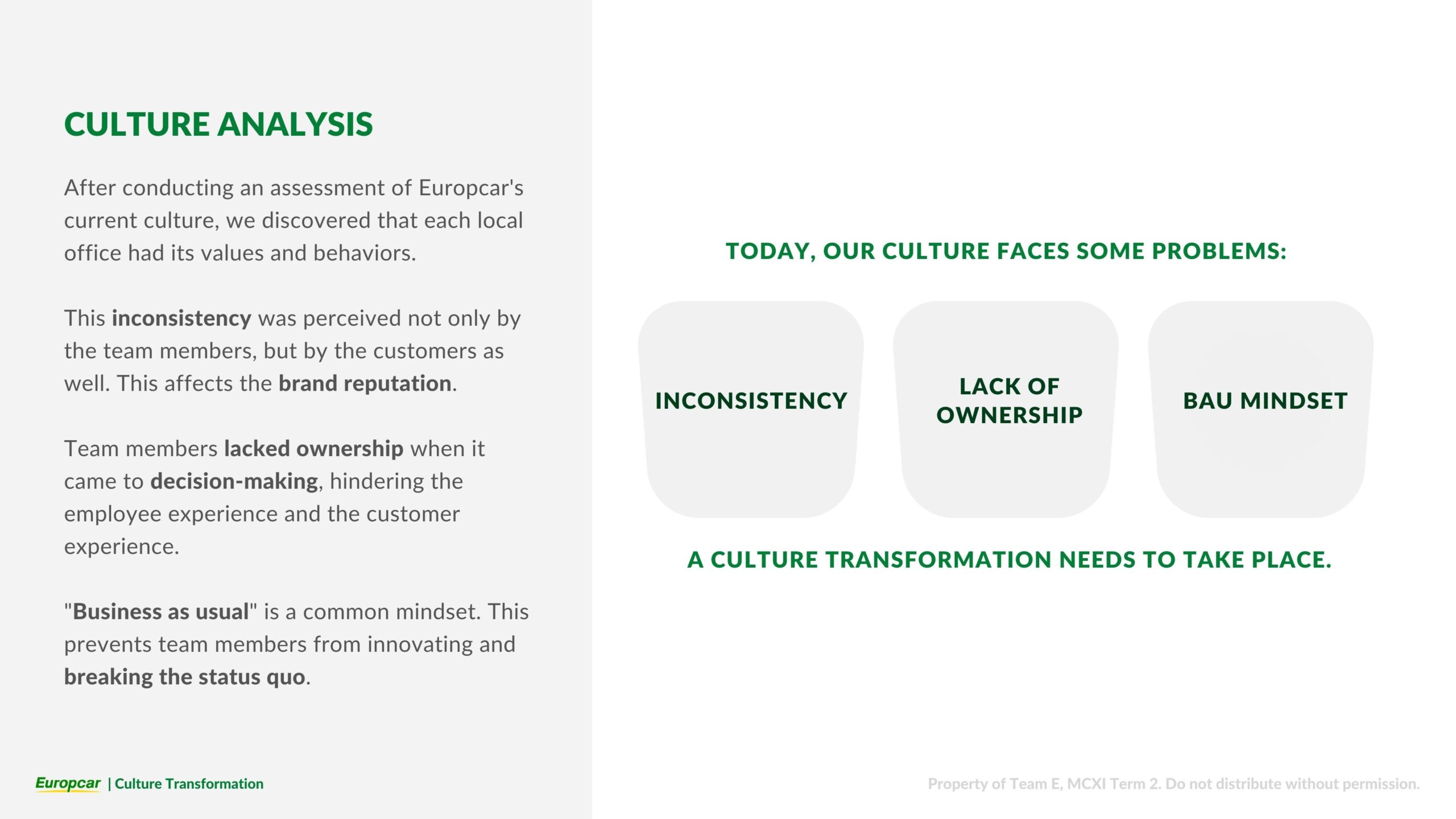
The New Era: Add to Multiply
The idea for the new culture was to promote teamwork and a collaborative way of working, in which unique skills and strengths are added to give exponentially better experiences to customers than the ones in the market today.
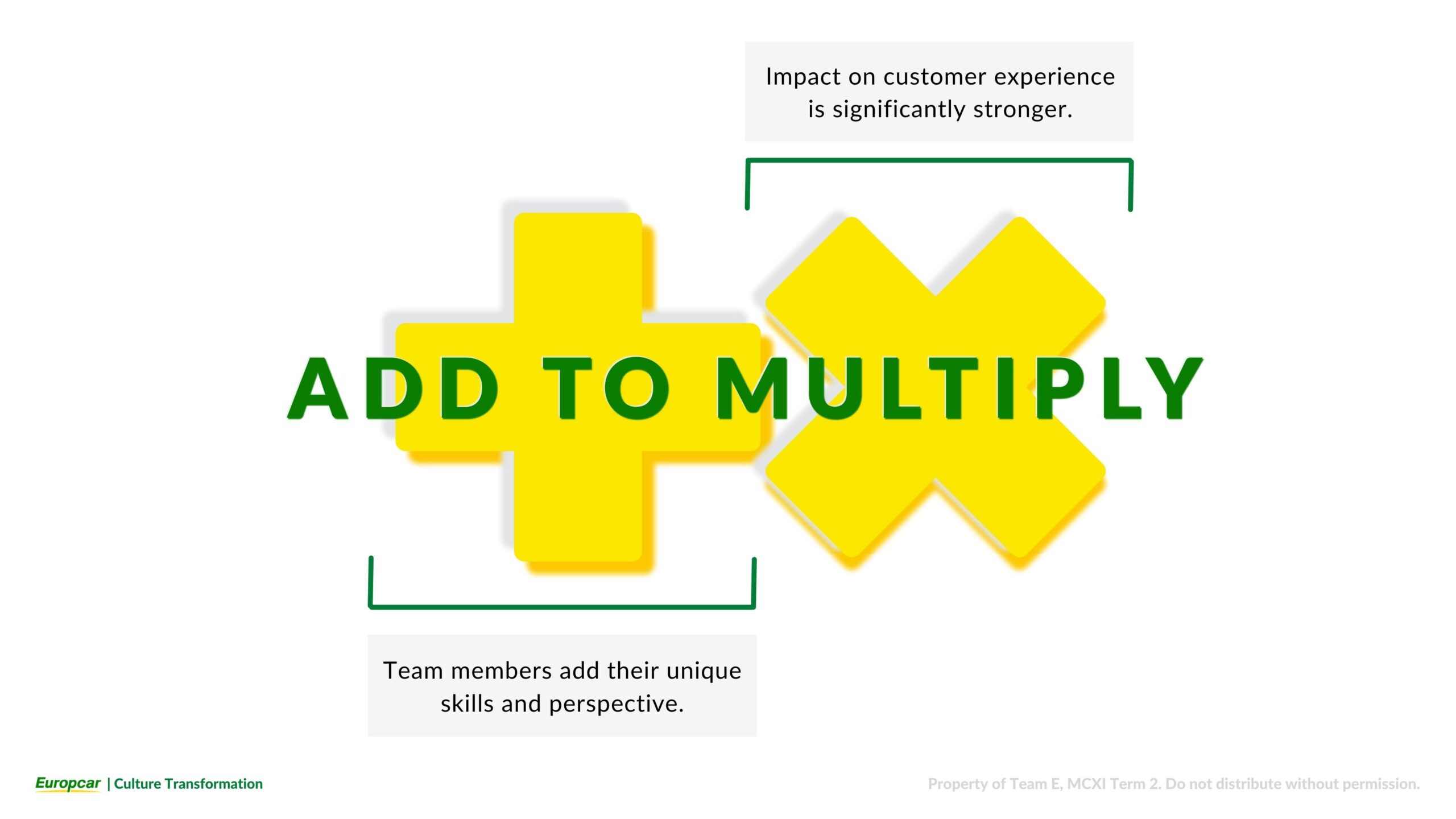
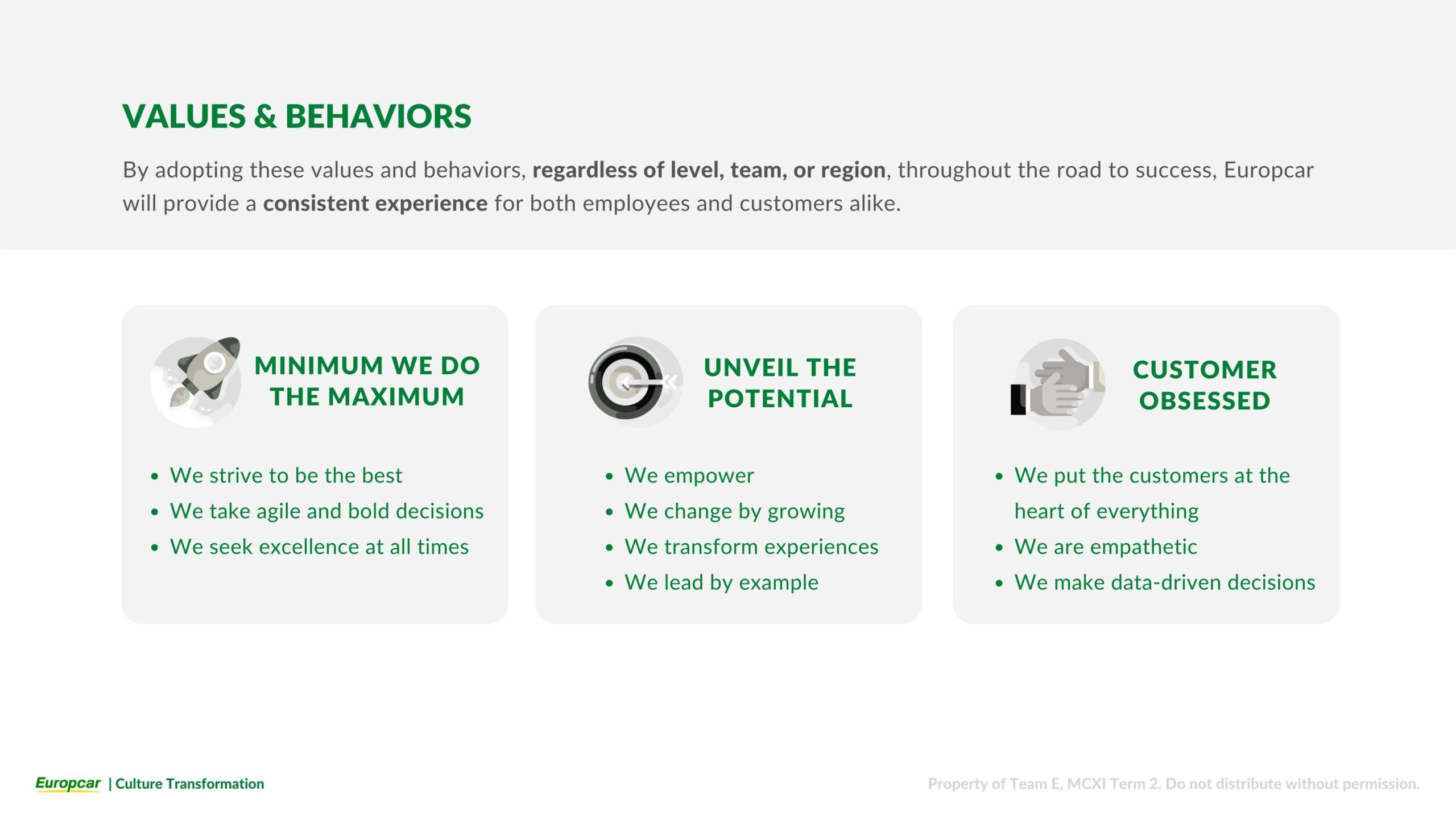
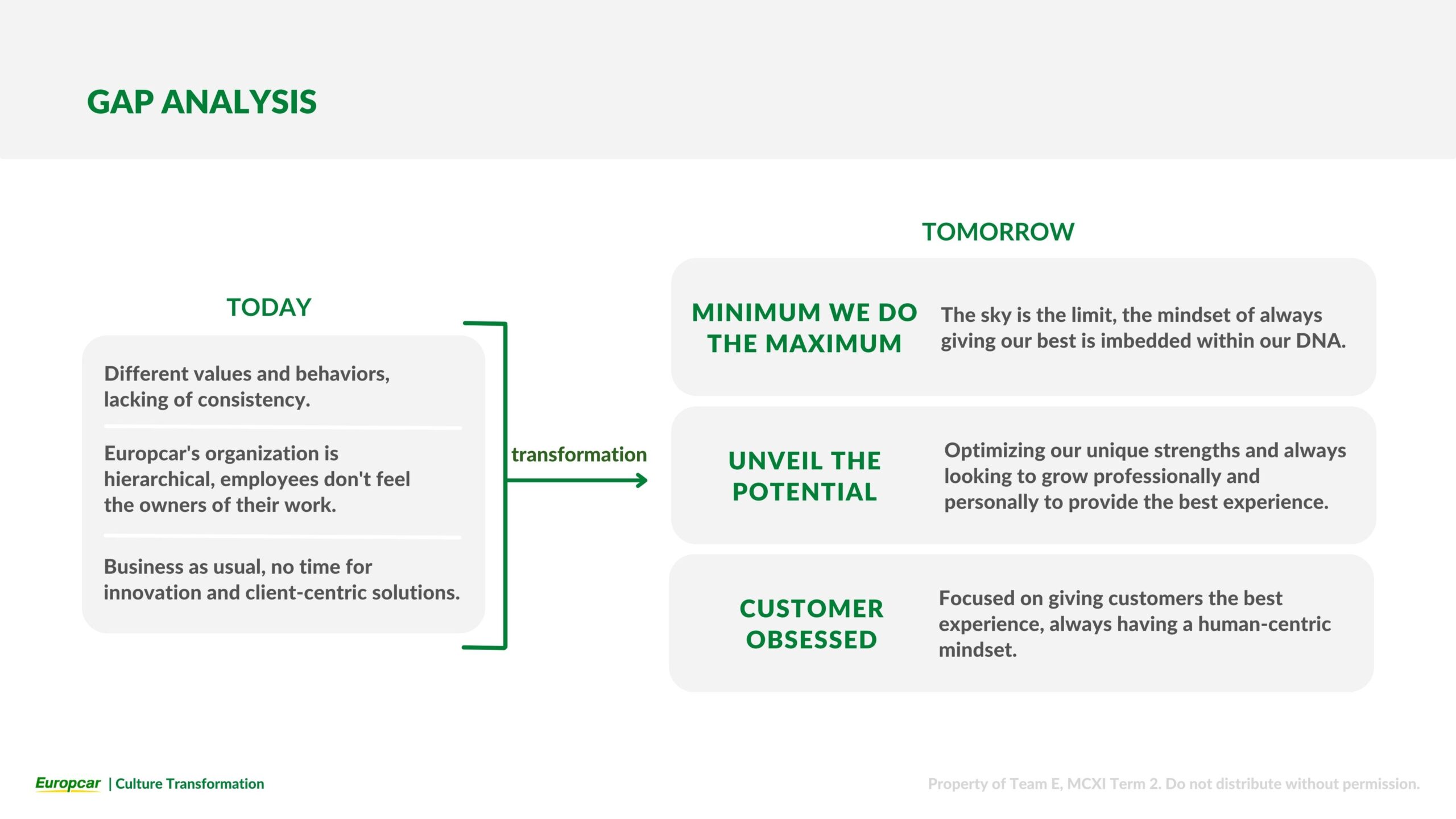
The team developed a portfolio of 22 initiatives to implement culture. All of them to be evaluated under three KPI umbrellas: satisfaction, engagement, and productivity.
Examples of initiatives proposed:
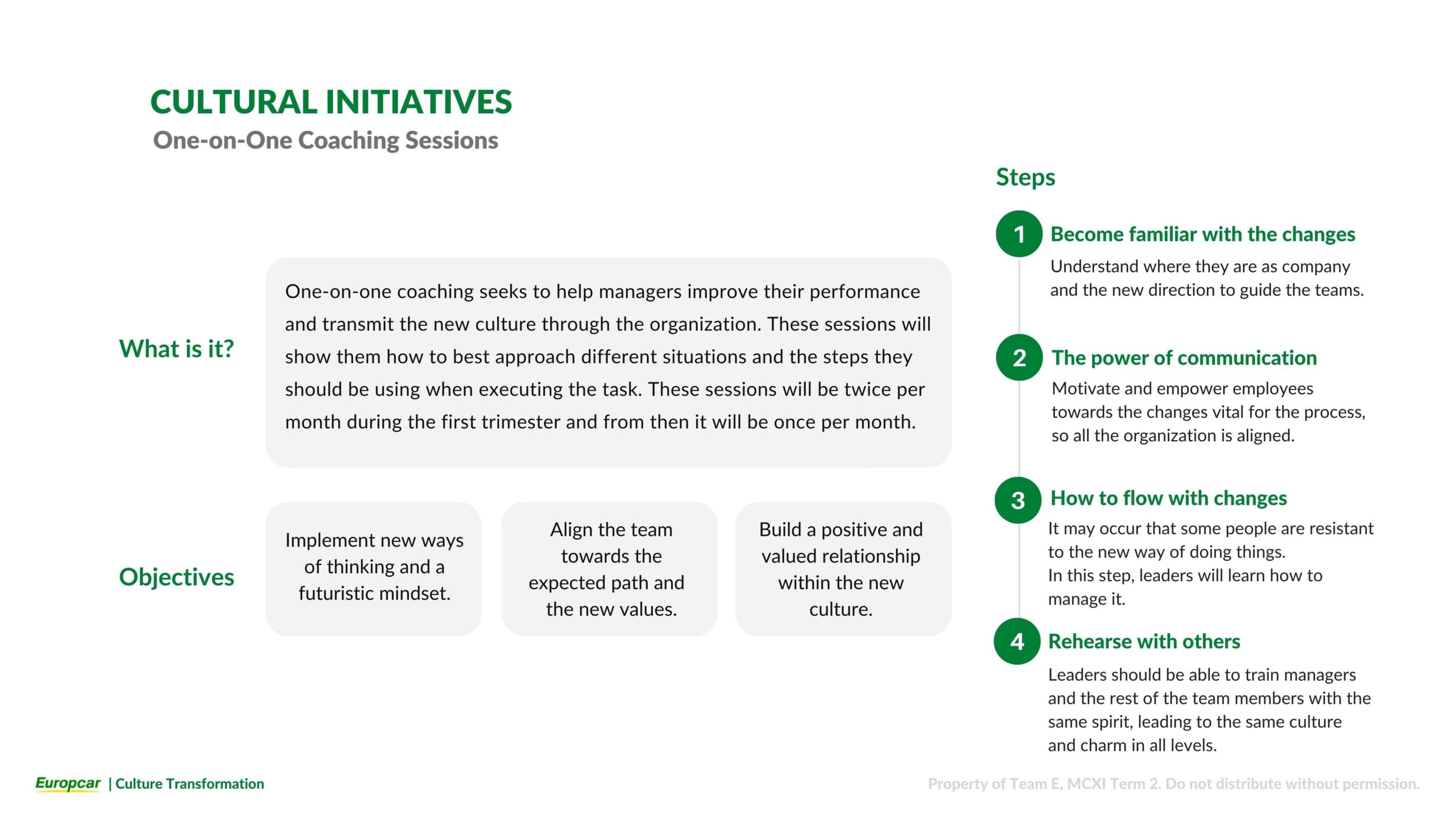
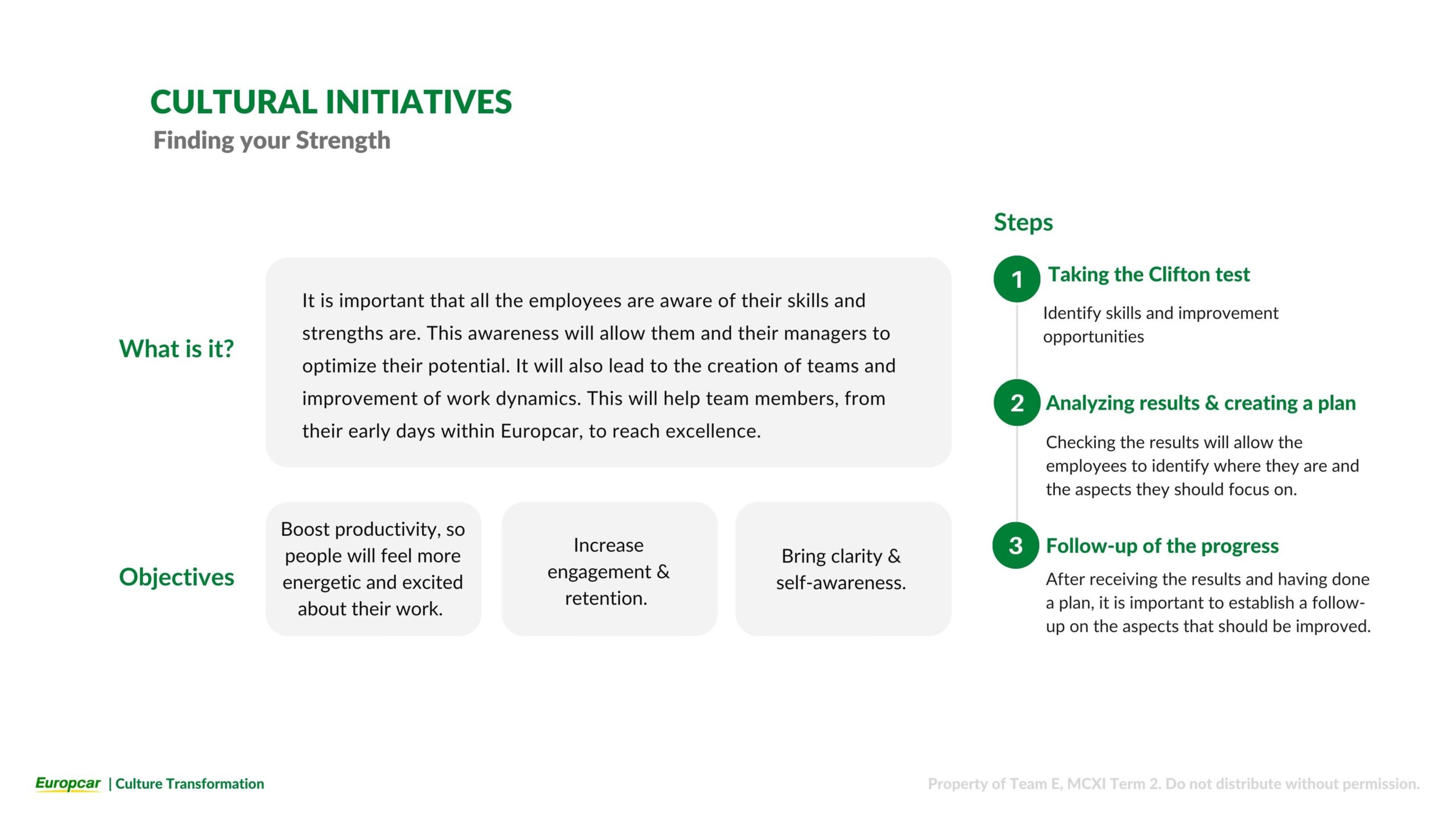
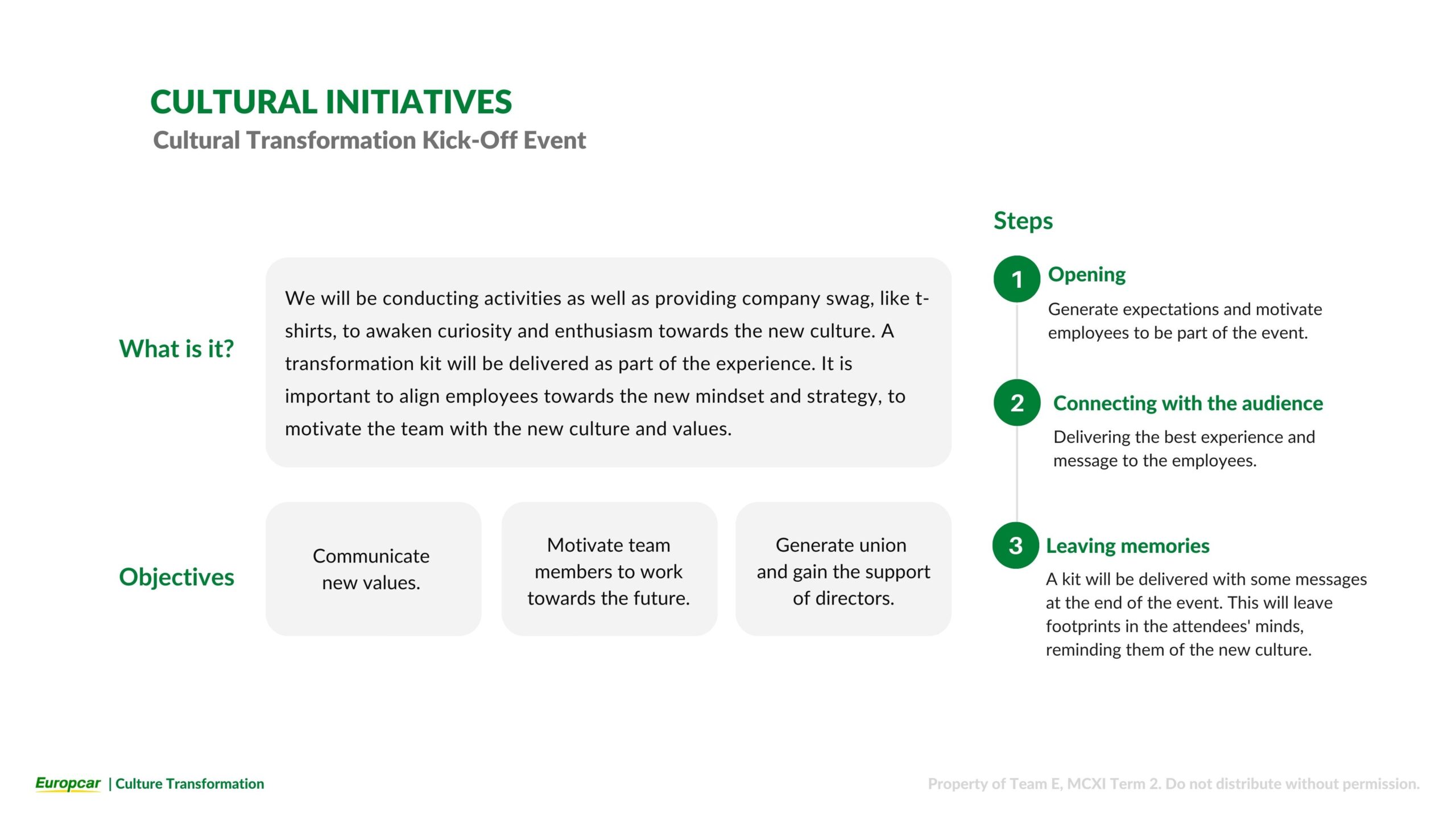
4. Digital Transformation
Reviewing the Current Innovation Status:
1. Assessing current product offerings and online user experience.
2. Identifying key drivers and trends.
3. Analyzing competitors.
4. Conducting future foresight exercises.
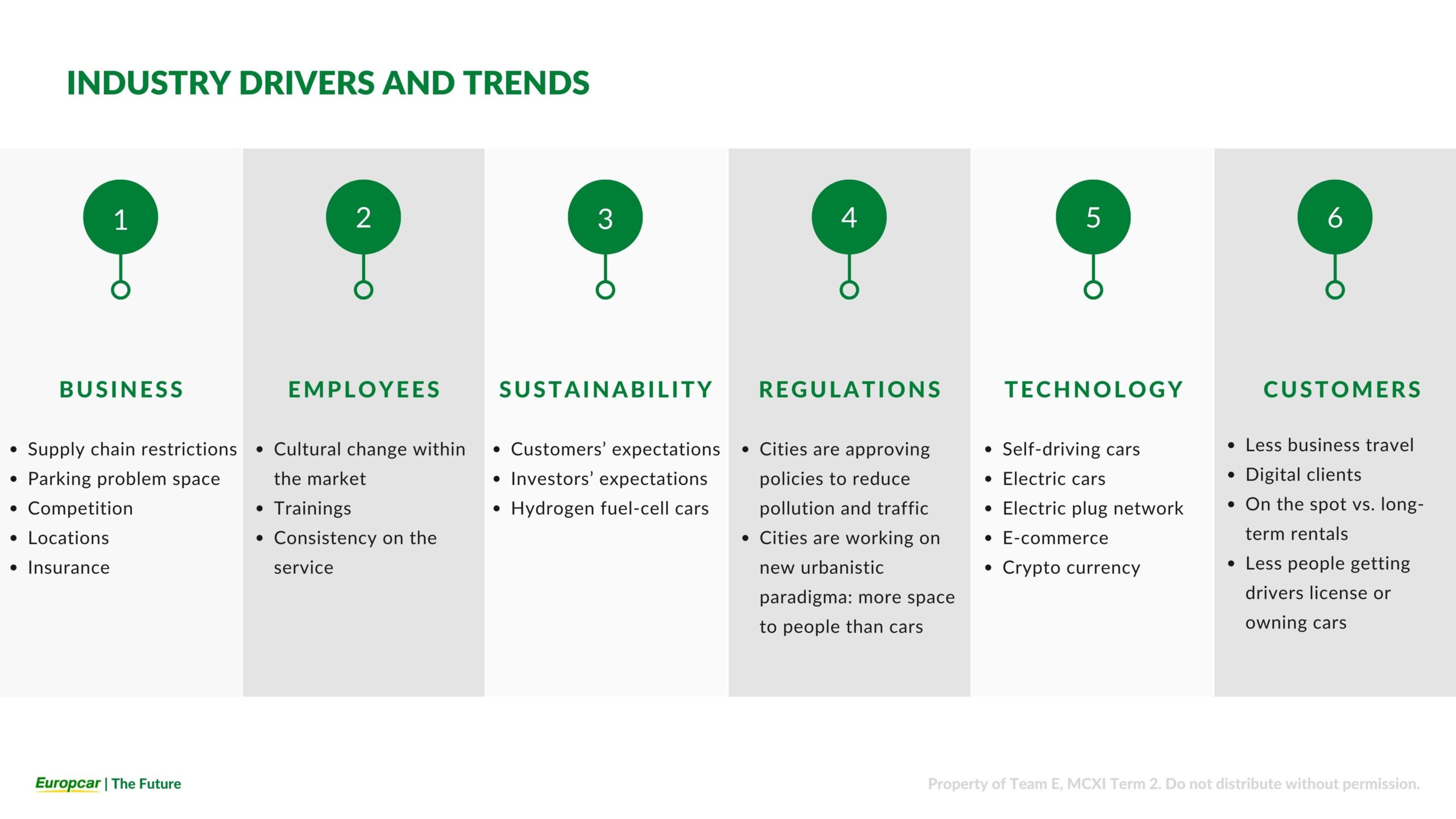
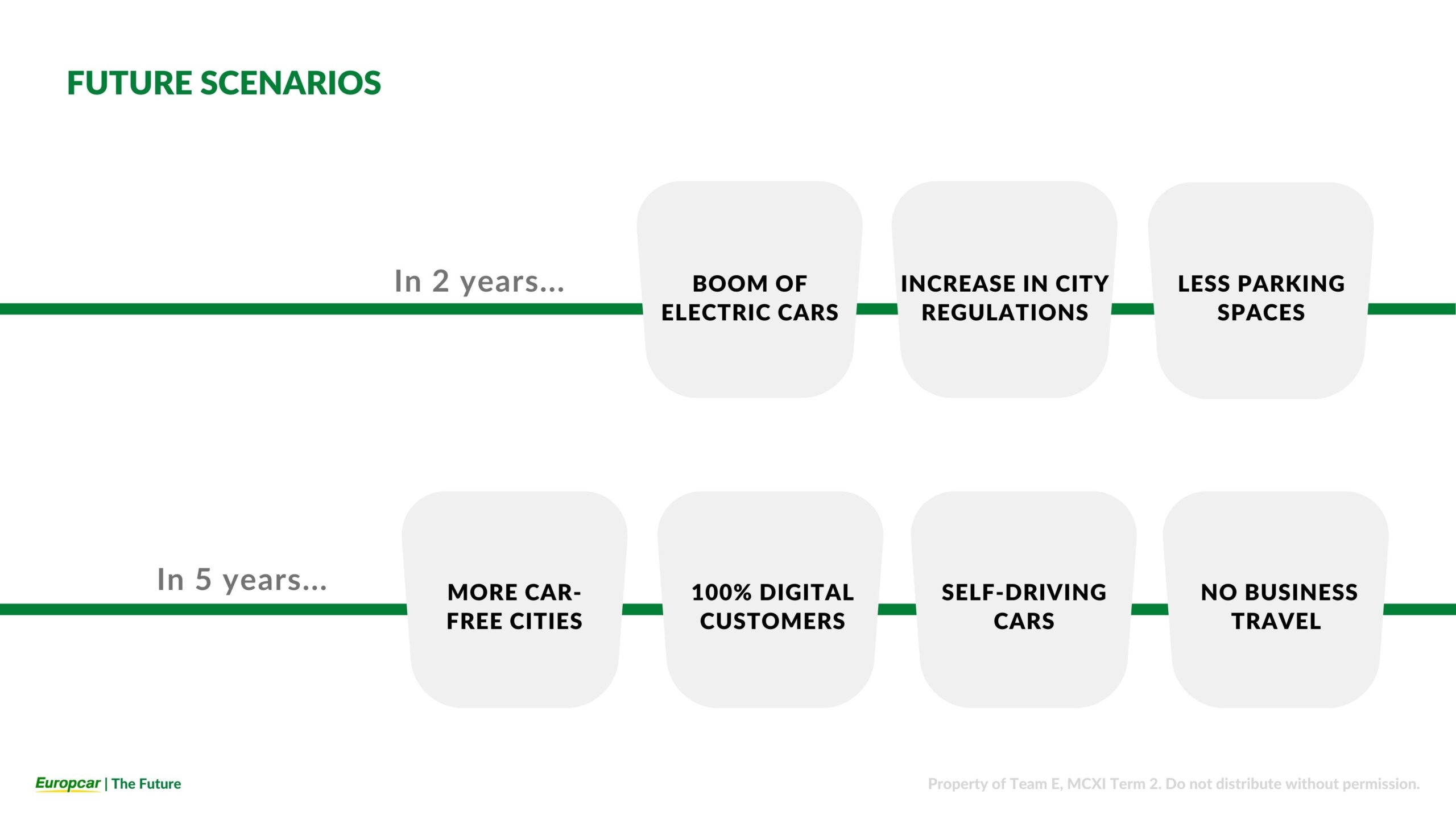
Challenges:
By understanding the drivers and trends affecting Europcar, we were able to identify the innovation challenges and frame them under the “how might we…?” formula.
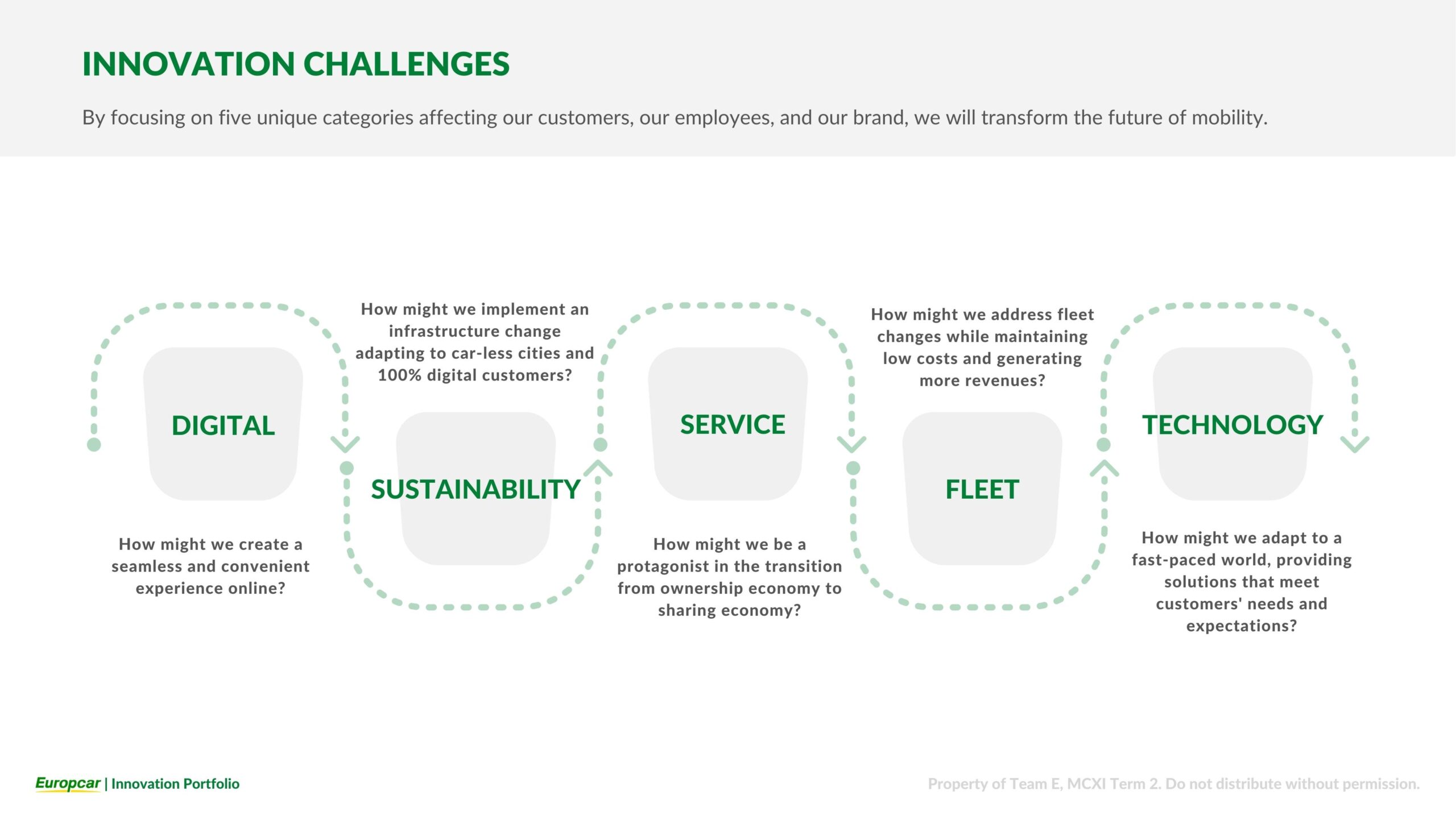
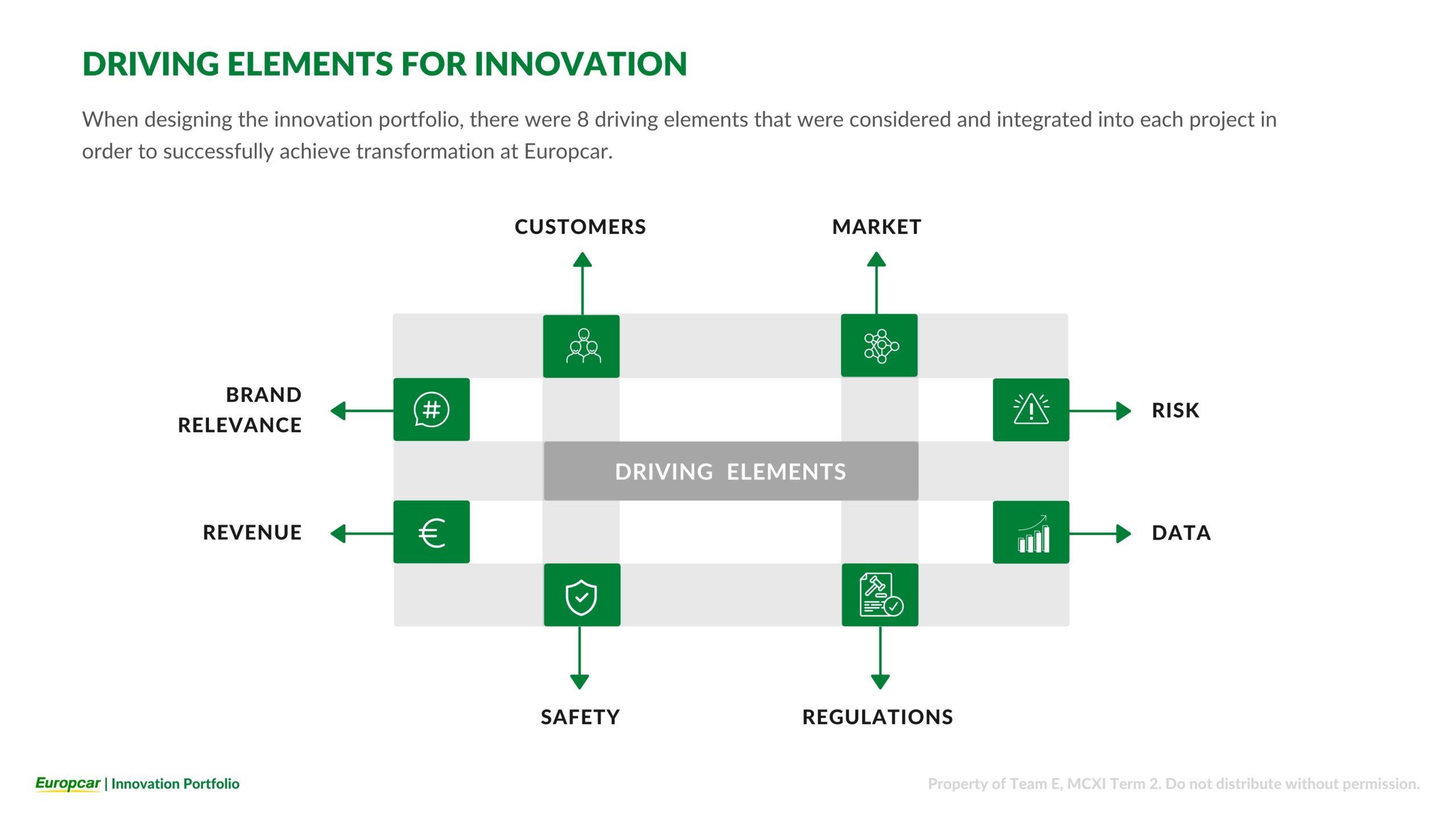
Portfolio:
Budget: Investment of 2% of last year's (2021) revenue in innovation.
The portfolio was divided into three types of innovation projects:
1. Core: Optimizing existing products.
2. Adjacent: Expanding to new business services.
3. Transformational: Introducing novel services to the market.

Each project was prioritized given the following criteria: Value, Effort, and Risk.
The “Lease your Car” Program, for example, was one of the initiatives in the portfolio. We followed the design thinking process, completed a business canvas model, and developed a framework to follow for any other project in the portfolio.
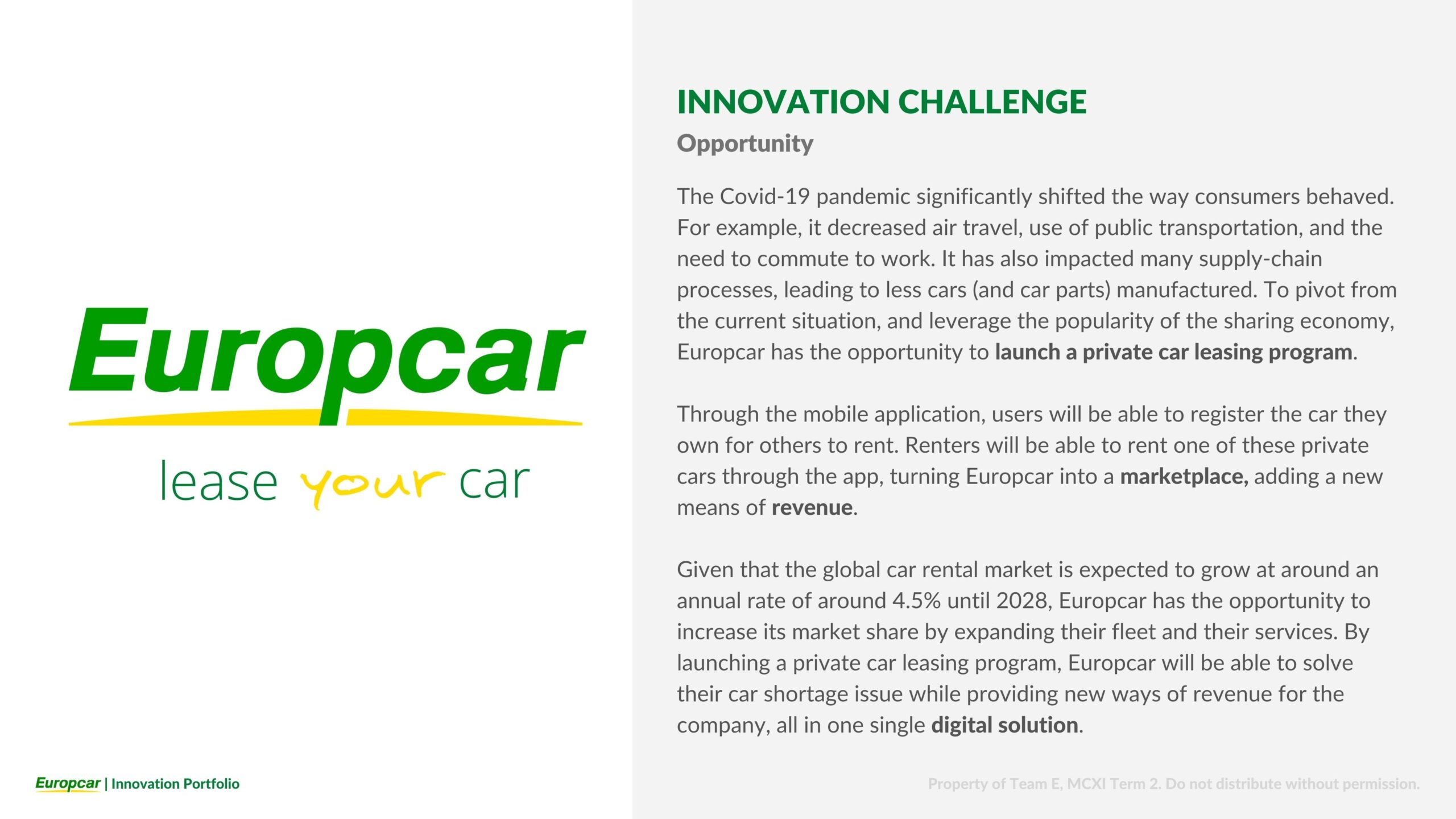
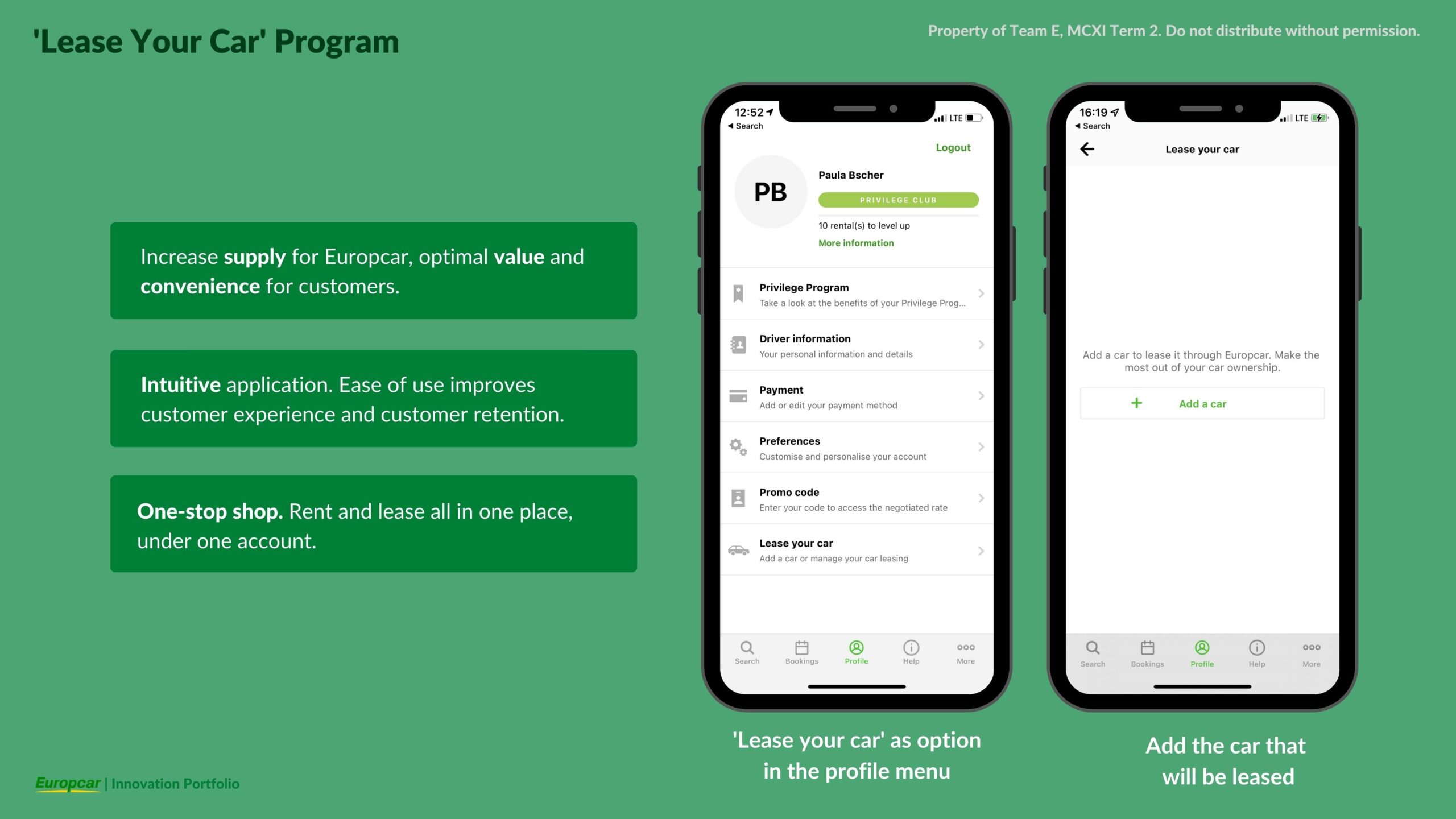
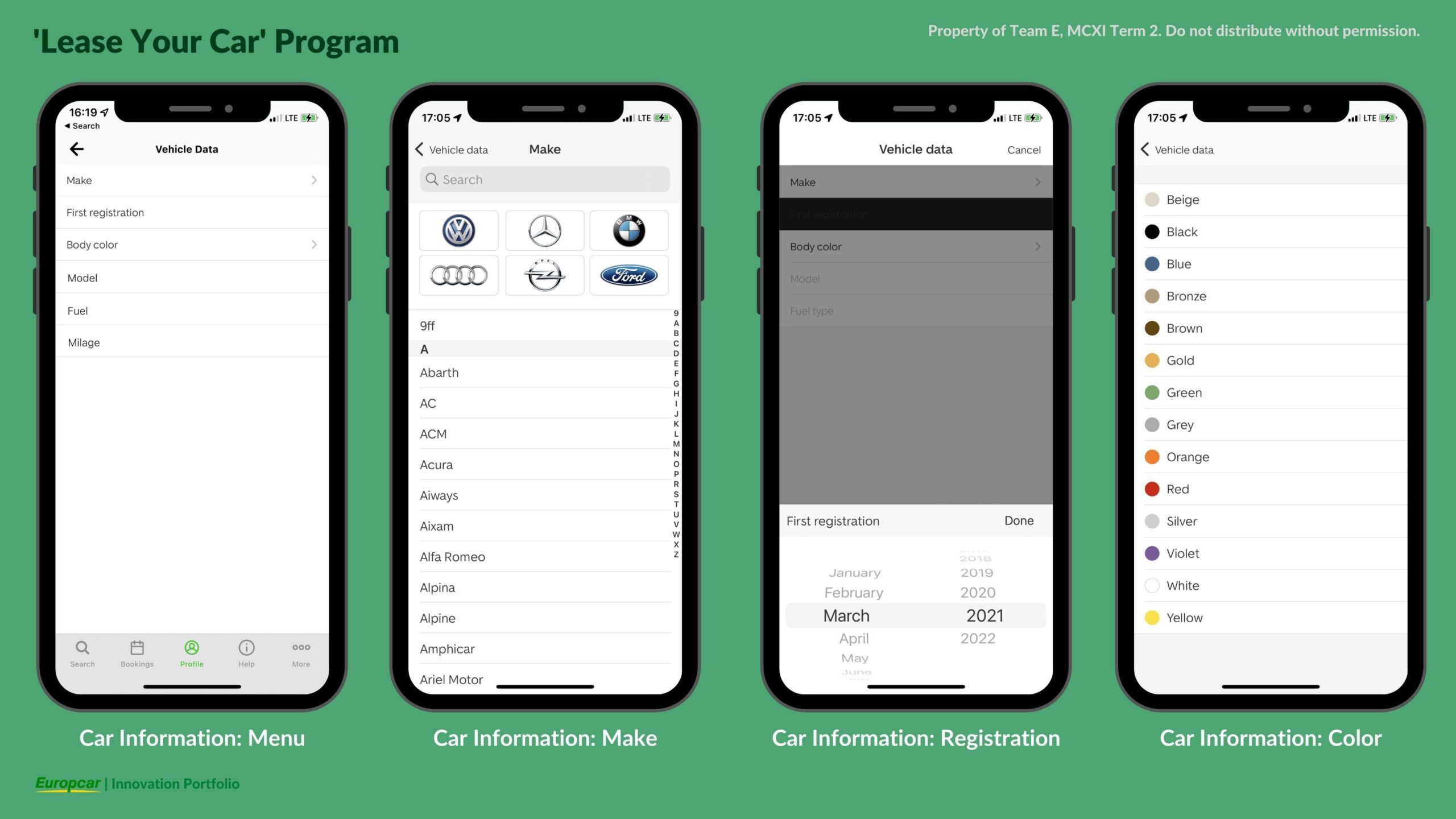
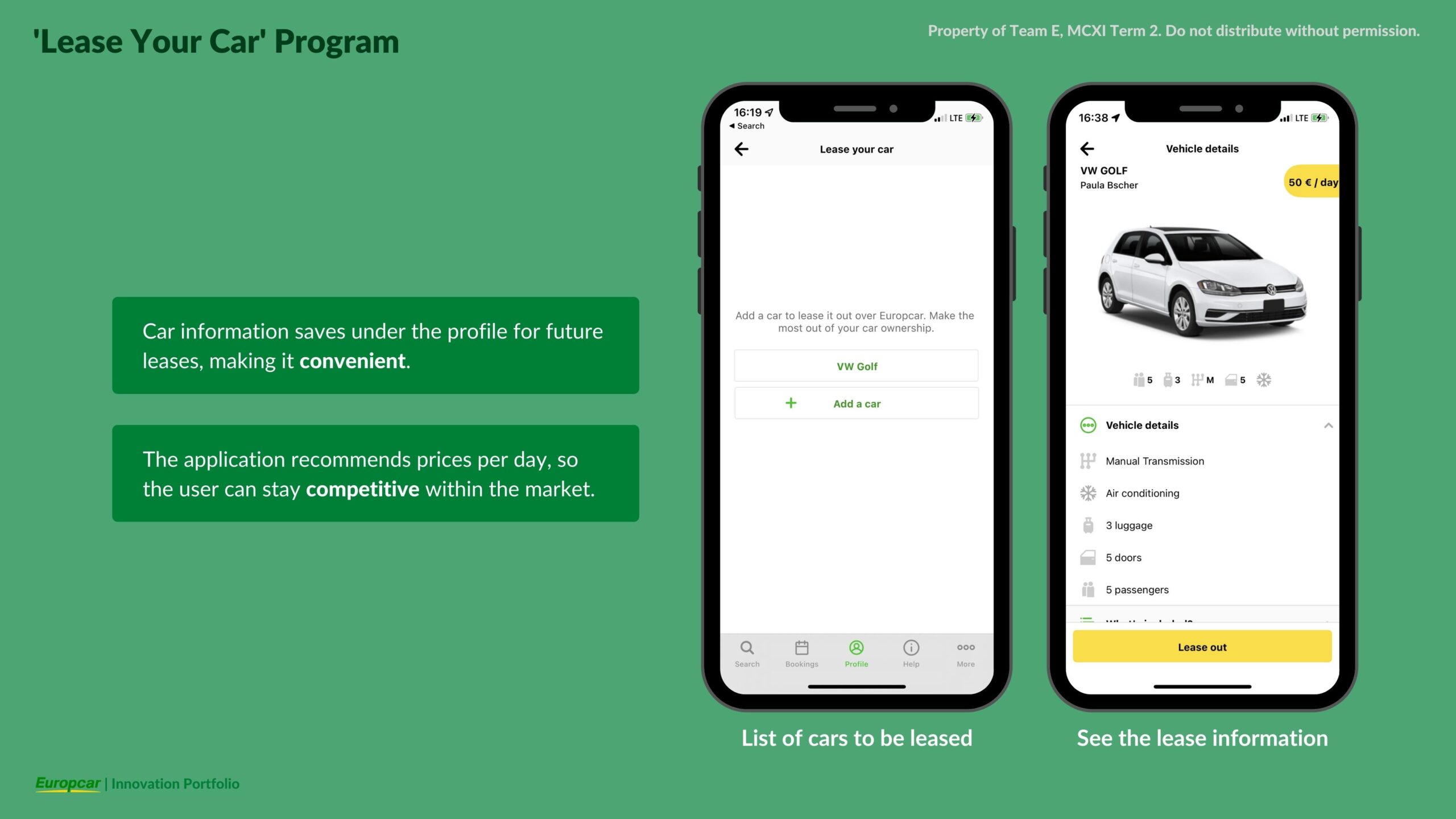

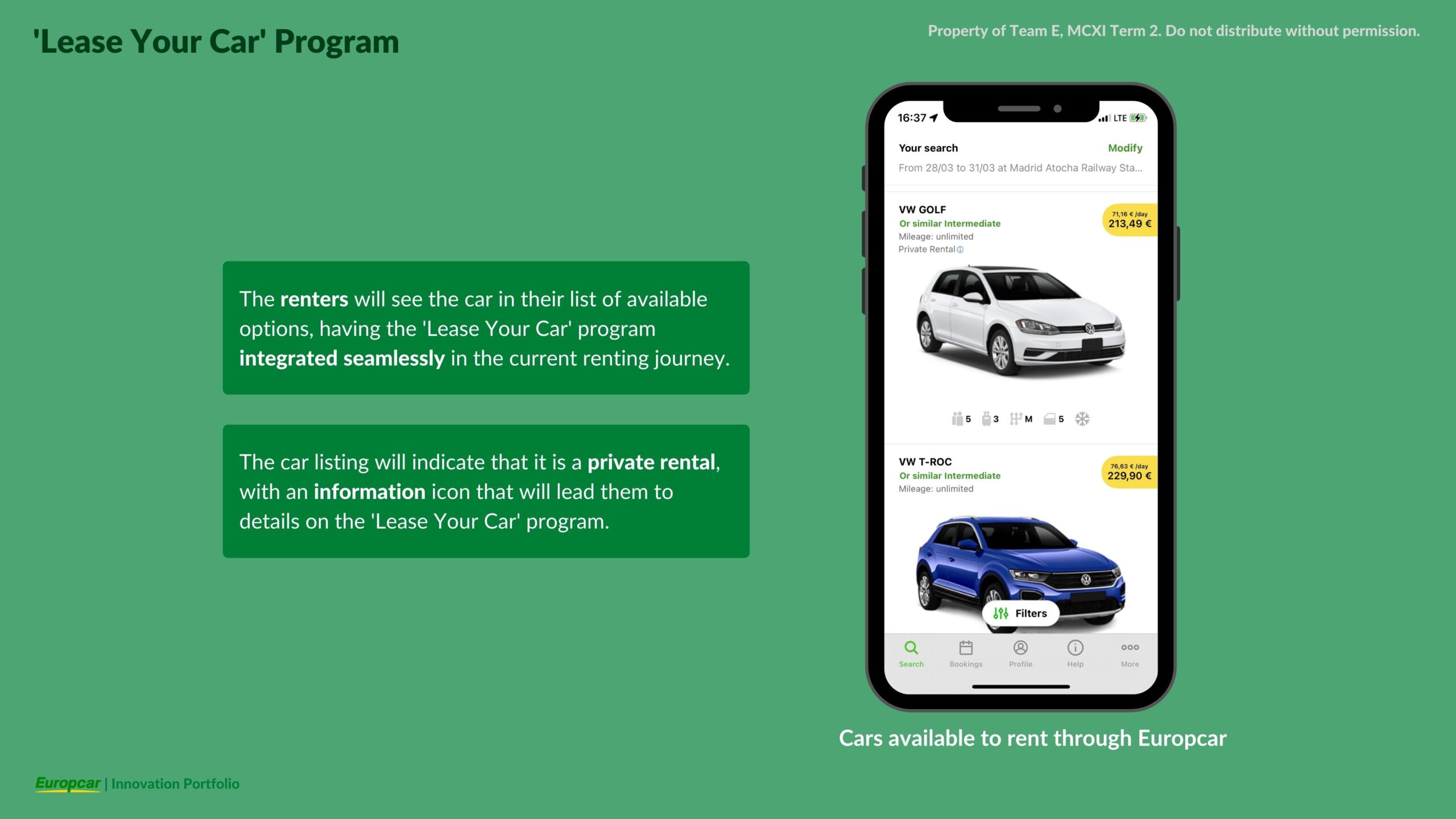
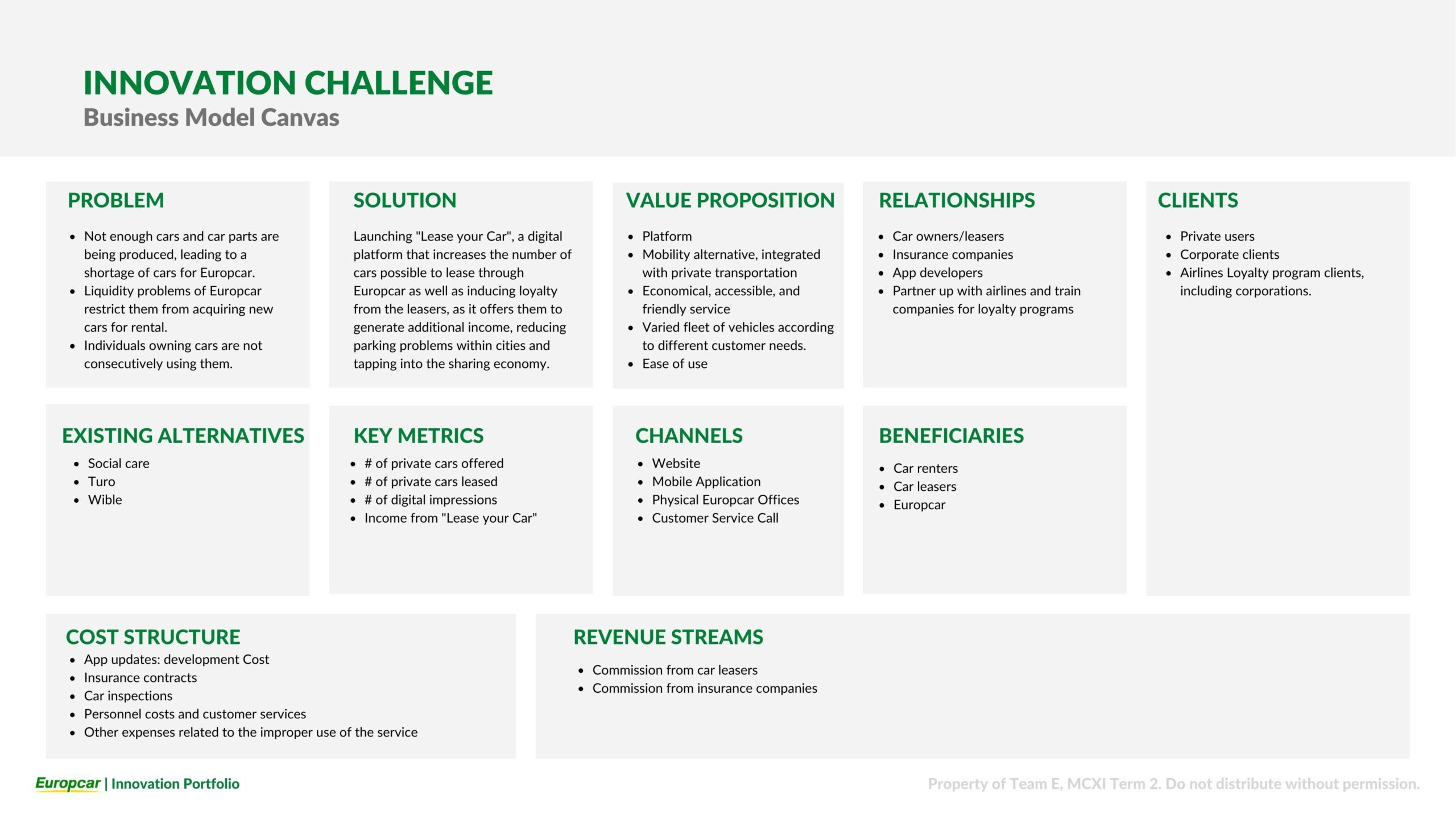
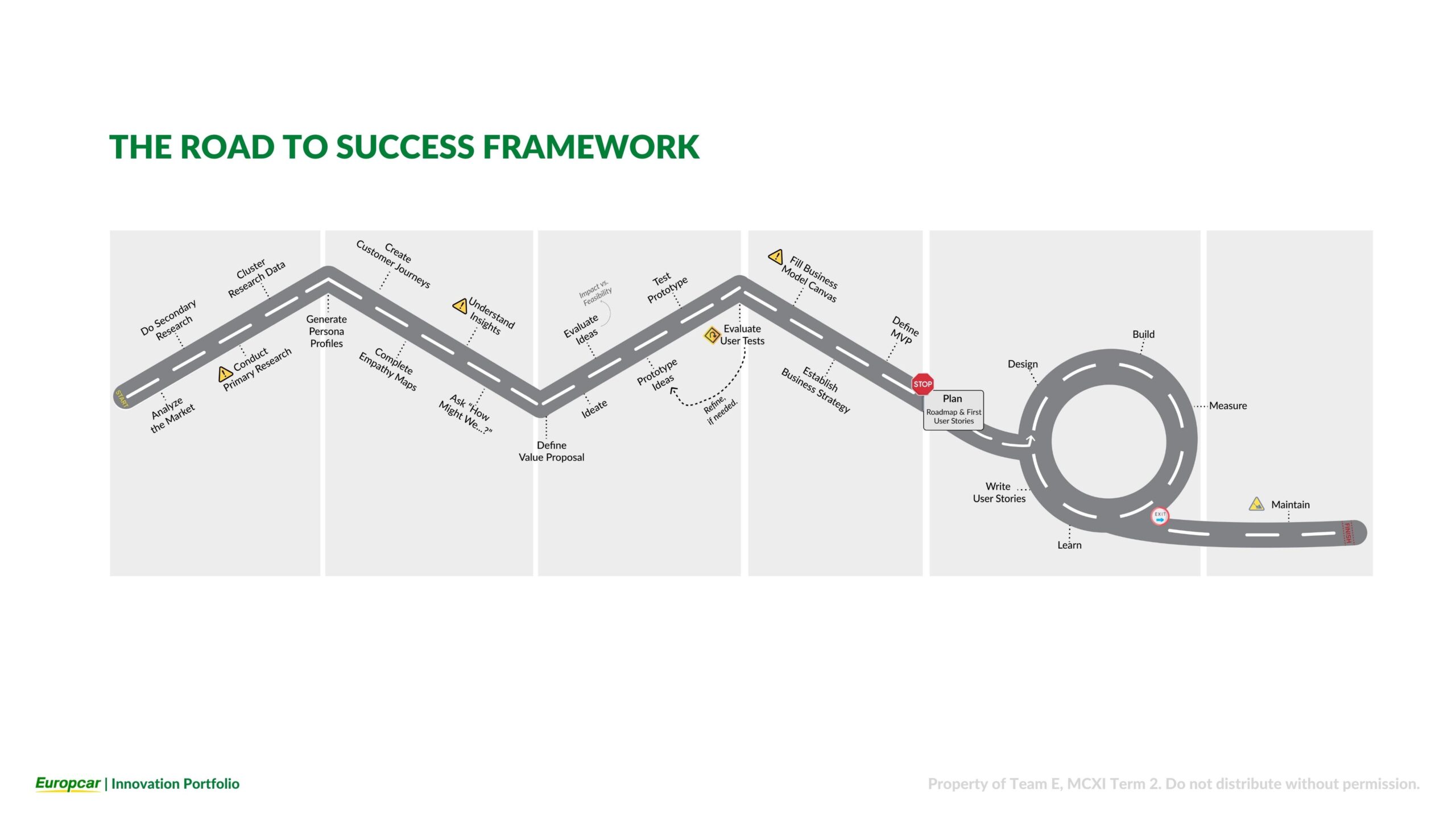
Team:
Estefania Antia, Paula Bscher, Macarena Boza, Ximena Cam, Carlo Maggioni, and Daniela Toro.
Takeaway:
When approaching a design problem, it is vital to include both convergent and divergent steps. By zooming in and out, we are able to identify small details and patterns that are key insights, while still understanding the relationships of direct and indirect stakeholders at a macro level.
